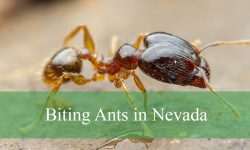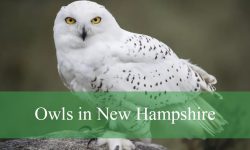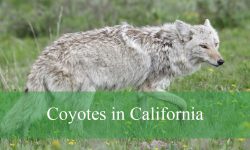From tiny Downy Woodpeckers to the impressive Pileated Woodpecker, New Jersey is home to a fascinating variety of these tree-drumming birds. Their striking markings, loud calls, and unique behaviors make them some of the most recognizable birds in the state.
Woodpeckers play an important role in the ecosystem by controlling insect populations and creating nesting cavities used by other wildlife. In New Jersey, some species are year-round residents while others migrate through during certain seasons.
This guide covers eight species of woodpeckers found in New Jersey, with pictures and identification tips to help bird enthusiasts and casual observers recognize them more easily.
Types of Woodpeckers Found in New Jersey
Downy Woodpecker (Dryobates pubescens)
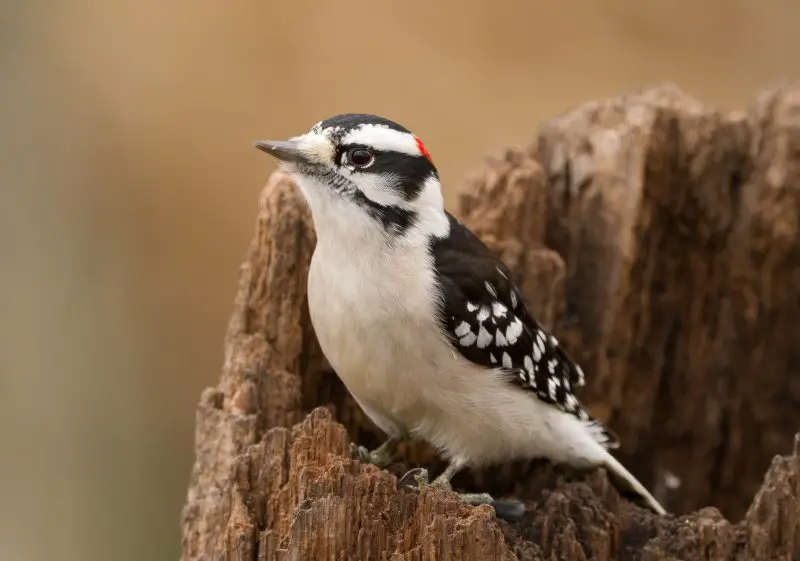
The Downy Woodpecker is the smallest and most frequently seen woodpecker in New Jersey. With its compact body, short bill, and black-and-white plumage, it often visits backyards and feeders, making it familiar even to casual birdwatchers. Males can be distinguished by a small red patch on the back of their head, while females lack this marking. Their petite size and quick movements often make them appear quite lively.
This species is highly adaptable and can thrive in a wide variety of habitats, including woodlands, orchards, parks, and suburban neighborhoods. Because of its small size, the Downy is able to exploit thinner branches and smaller trees that larger woodpeckers avoid. This versatility helps it remain widespread throughout the year in New Jersey.
Diet plays a key role in its behavior. The Downy feeds on insects such as beetle larvae, ants, and caterpillars, but it also consumes seeds and berries when available. At feeders, it readily accepts suet, peanuts, and sunflower seeds. This broad diet allows it to survive both harsh winters and food-scarce periods.
Their call is a sharp pik sound, and they often drum rapidly on tree trunks or even metal surfaces to communicate. Breeding occurs in spring, with pairs excavating small nest cavities in dead trees or branches. Because they are so common, they serve as an excellent introduction to woodpecker identification in New Jersey.
Red-bellied Woodpecker (Melanerpes carolinus)
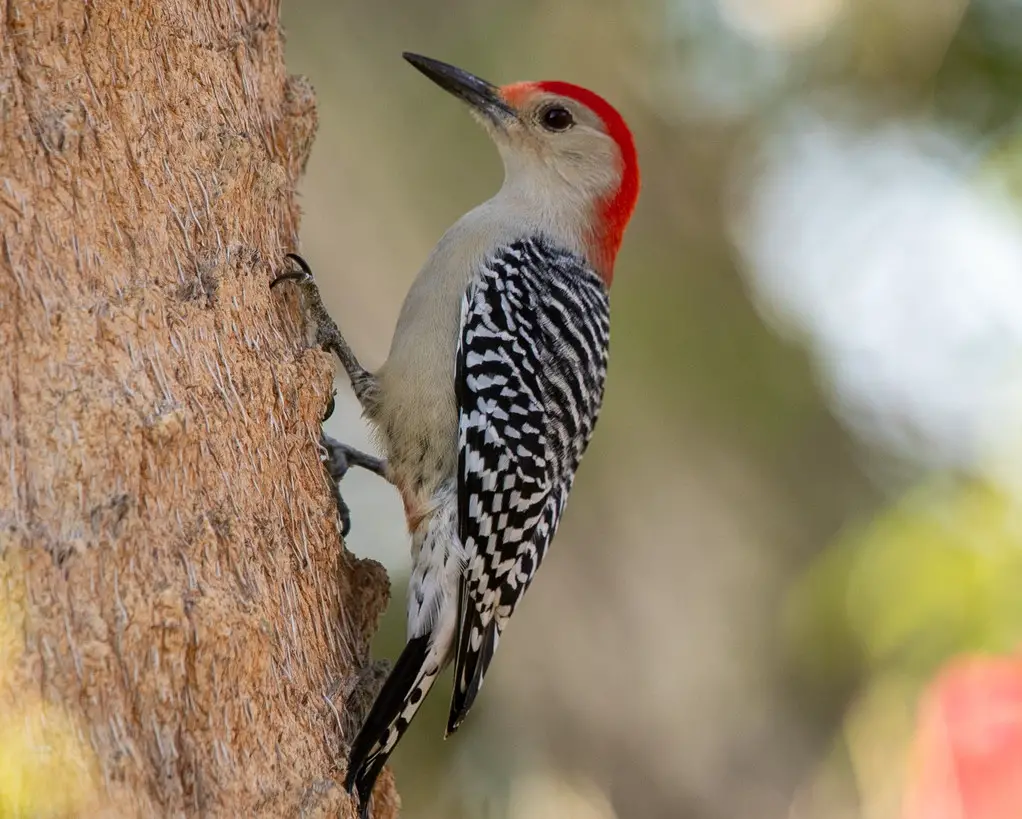
Despite its name, the Red-bellied Woodpecker rarely shows a prominent red belly; instead, it is recognized by its striking barred back and the brilliant red extending from the crown to the nape. This medium-sized woodpecker is one of the most common in New Jersey, thriving in both natural forests and suburban environments. Its loud, rolling calls often give away its presence even before it is seen.
The Red-bellied is a year-round resident and highly adaptable. It prefers deciduous or mixed forests but has increasingly moved into towns and backyards where mature trees are available. Its ability to live in close proximity to humans has contributed to its growing population in the region.
In terms of feeding, this species has a varied diet that includes insects, fruits, nuts, and seeds. During summer, it consumes large numbers of beetles, grasshoppers, and caterpillars, while in winter it relies heavily on acorns and berries. At backyard feeders, it is a frequent visitor to suet, sunflower seeds, and even corn.
Nesting involves excavating cavities in dead trees or using existing holes. Both male and female share incubation duties and feed the young. Known for its intelligence, the Red-bellied sometimes stores food for later consumption. Its adaptability and distinctive look make it one of the easiest woodpeckers to identify in New Jersey.
Northern Flicker (Colaptes auratus)
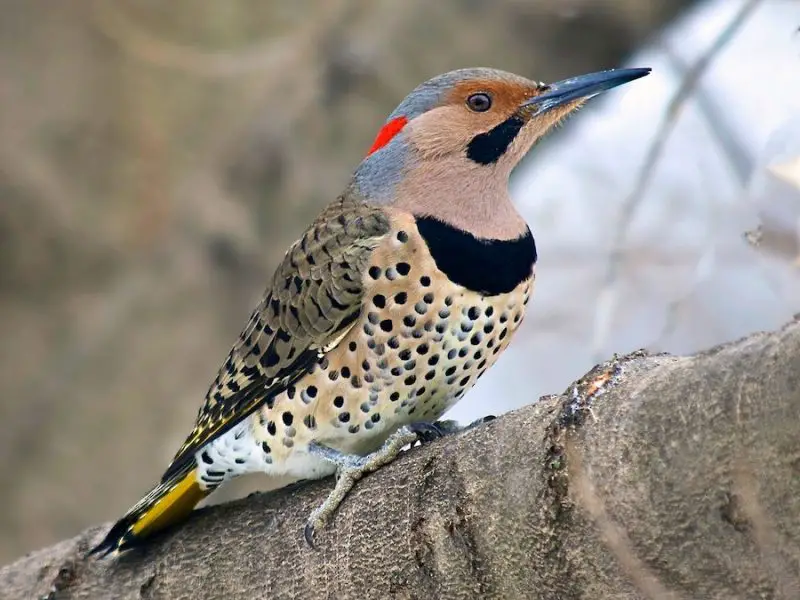
The Northern Flicker is a large and distinctive woodpecker, unique in its preference for feeding on the ground. Unlike most woodpeckers that cling to tree trunks, flickers often forage in open areas, probing soil for ants, which make up a large portion of their diet. They are easily recognized by their brownish body patterned with black spots, crescent-shaped chest mark, and a bright white rump patch visible in flight.
In New Jersey, the “Yellow-shafted” form is found, displaying yellow underwings and tail feathers. They are present year-round but are more noticeable in spring and summer, when their loud wick-a-wick-a-wick calls echo through open woodlands, edges, and suburban areas. Their migratory tendencies mean populations may fluctuate with the seasons.
Although they feed primarily on ants, Northern Flickers also consume beetles, flies, seeds, and berries. Their ground-foraging behavior sets them apart from other woodpeckers, making them a delight for birdwatchers scanning lawns, fields, and forest edges. In colder months, they may be drawn to backyard feeders offering suet or fruit.
Breeding pairs excavate nesting cavities in dead or decaying trees, although they sometimes use old holes left by other woodpeckers. They are devoted parents, sharing the incubation of eggs and feeding responsibilities. The Northern Flicker’s unique habits and striking plumage ensure it stands out as one of the most fascinating woodpeckers in New Jersey.
Hairy Woodpecker (Leuconotopicus villosus)
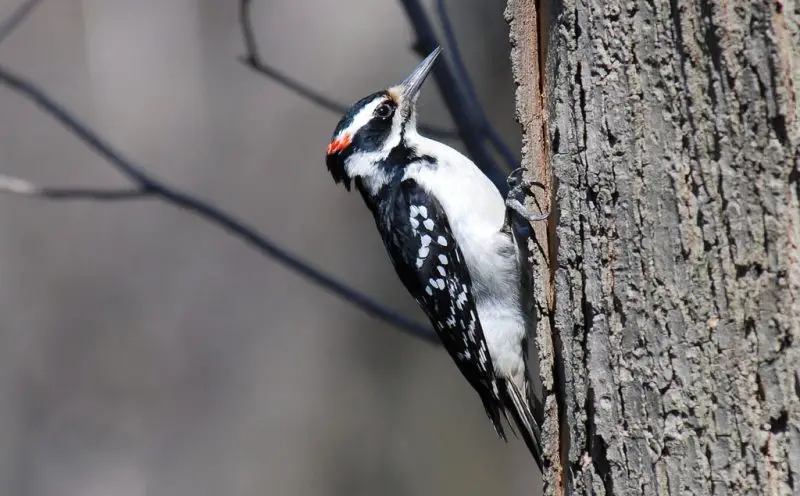
The Hairy Woodpecker closely resembles the Downy but is noticeably larger, with a longer, more powerful bill. Its plumage is also black and white, with males carrying a red patch on the back of the head. The challenge of distinguishing Hairy from Downy Woodpeckers often intrigues bird enthusiasts, but size and bill length are the most reliable features for identification.
This species prefers mature forests, wooded parks, and areas with larger trees, where it can forage effectively. Although not as common as the Downy, it is still a year-round resident of New Jersey and is often heard drumming loudly in search of insects beneath bark. Its strong bill allows it to excavate deeper into wood compared to its smaller cousin.
Diet is centered on insects such as beetle larvae, caterpillars, and ants, but they will also take fruits, seeds, and suet at feeders. Their foraging technique is deliberate and powerful, often leaving behind square-shaped holes in wood. This makes them important contributors to forest health, as they help control insect populations.
Hairy Woodpeckers nest in cavities that they excavate themselves, usually in dead trees or large branches. Both sexes participate in raising the young. While less abundant in suburban areas than the Downy, they remain a widespread species that rewards patient observers with their striking appearance and behavior.
Pileated Woodpecker (Dryocopus pileatus)
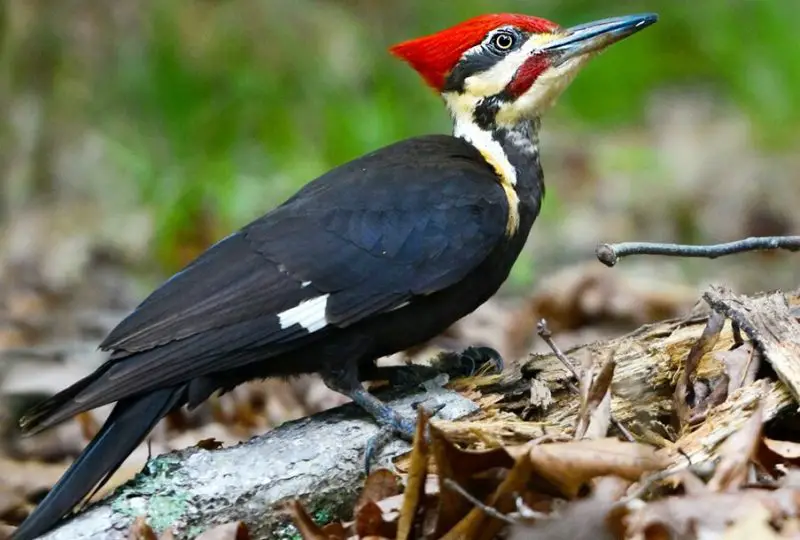
The Pileated Woodpecker is the largest woodpecker in New Jersey and one of the most impressive birds in the forest. With its striking red crest, black body, and bold white underwing patches, it is unmistakable in appearance. Its loud, ringing calls and powerful drumming can carry for long distances, often drawing attention to its presence.
This species requires extensive forested areas with mature or old-growth trees, which provide both feeding and nesting opportunities. In New Jersey, they are found in large tracts of woodland, though sightings can still be considered special due to their preference for undisturbed habitats. Their size and behavior make them less adaptable to suburban settings compared to smaller woodpeckers.
Diet primarily consists of carpenter ants, wood-boring beetle larvae, and other insects that they dig out of rotting logs or trees. They also supplement their diet with wild fruits, nuts, and berries. The large rectangular holes they leave behind are distinctive and provide shelter for many other species, including owls and small mammals.
During breeding season, pairs excavate new nesting cavities each year, often in dead or decaying trees. These cavities can be quite large and are later reused by other wildlife. The Pileated Woodpecker plays a crucial role in forest ecosystems, both as a predator of insects and as an ecosystem engineer creating habitat for other species.
Yellow-bellied Sapsucker (Sphyrapicus varius)
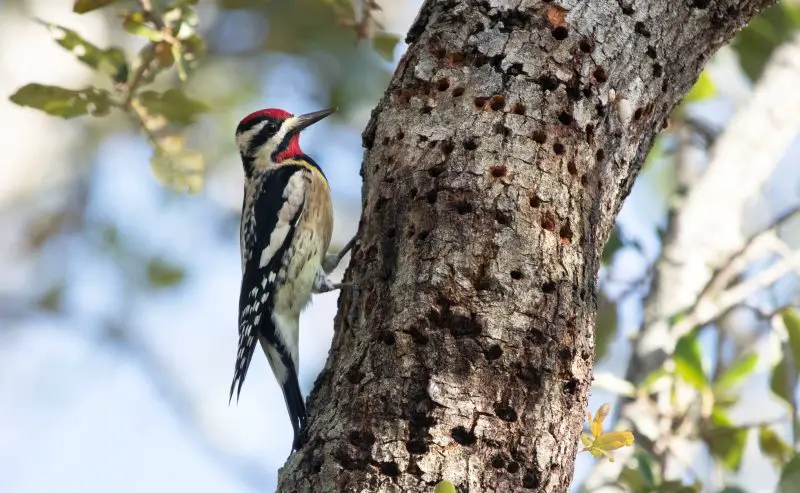
The Yellow-bellied Sapsucker is a migratory woodpecker that passes through or winters in New Jersey. It is smaller than many of the state’s woodpeckers and can be recognized by its mottled plumage, white wing patches, and red markings on the forehead and throat in males. Its name comes from the faint yellow wash on its belly, though this is often hard to see.
This species is famous for drilling neat horizontal rows of small holes, called sap wells, in trees. These wells allow sap to flow, which the sapsucker licks up with its brush-tipped tongue. The holes also attract insects, providing another valuable food source. Trees like birch, maple, and apple are frequently targeted.
Unlike other woodpeckers, Yellow-bellied Sapsuckers are not permanent residents in New Jersey. They breed farther north and migrate through the state in spring and fall, with some individuals overwintering in southern parts of New Jersey. Their migratory nature makes them less commonly observed than Downy or Red-bellied Woodpeckers.
Breeding takes place in northern forests, where pairs excavate cavities in live trees. In New Jersey, most sightings occur in wooded areas and orchards during migration. Although not a year-round resident, their distinctive feeding behavior and seasonal presence make them a fascinating part of the state’s woodpecker community.
Red-headed Woodpecker (Melanerpes erythrocephalus)
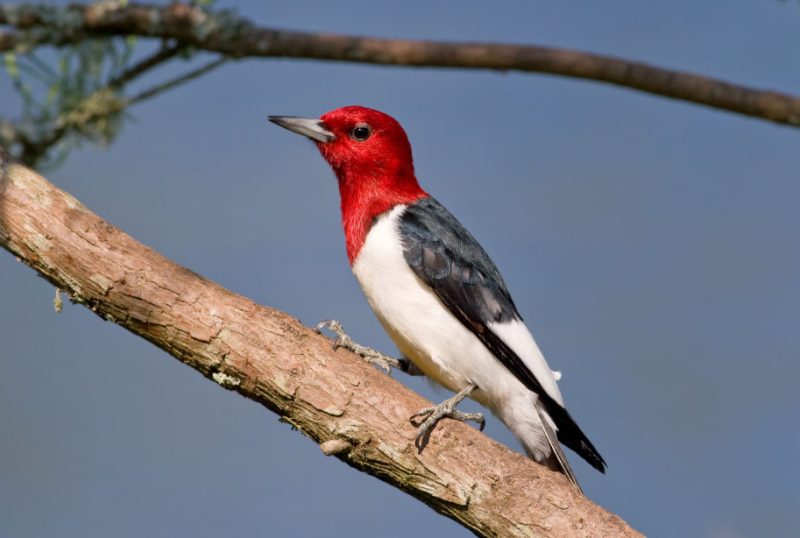
The Red-headed Woodpecker is one of the most striking birds in New Jersey, with its bright crimson head, snow-white body, and glossy black wings. This bold coloration sets it apart from all other woodpeckers. Unfortunately, it is also among the rarest in the state and is considered threatened in New Jersey due to habitat loss and declining populations.
Historically, Red-headed Woodpeckers were more widespread, but their numbers have decreased as open woodlands and wetlands have been reduced. They favor areas with scattered trees, orchards, and dead snags for nesting. In New Jersey, they are most often spotted in limited breeding areas and during migration.
Unlike many other woodpeckers, Red-headed Woodpeckers are skilled flycatchers, often catching insects in midair. They also eat nuts, seeds, berries, and occasionally small animals. They are known to store food, wedging it tightly into tree crevices or under bark. This caching behavior helps them survive periods of food scarcity.
Nesting occurs in dead trees or snags, with both parents sharing incubation duties and feeding the young. Because of their beauty and rarity, seeing a Red-headed Woodpecker in New Jersey is considered a highlight for bird enthusiasts. Conservation efforts focus on protecting suitable habitats and encouraging the preservation of standing dead trees.
Black-backed Woodpecker (Picoides arcticus)
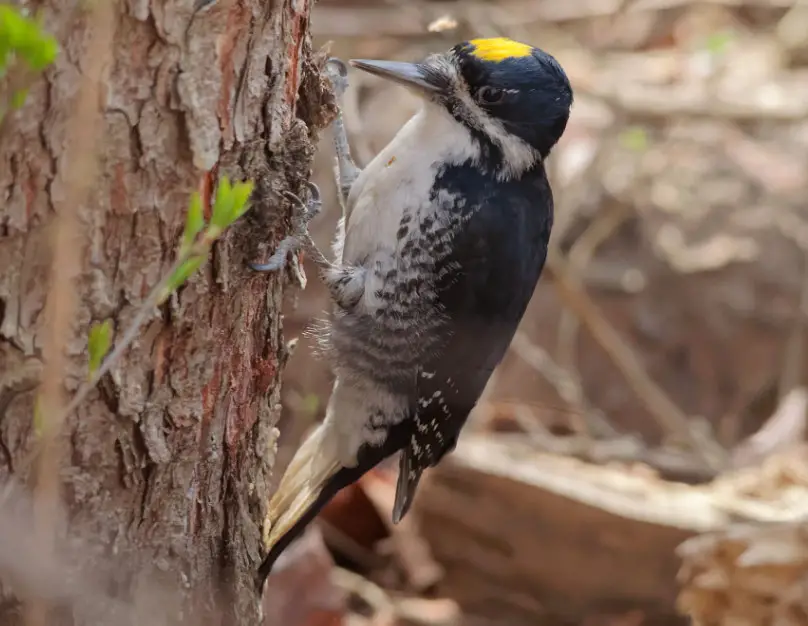
The Black-backed Woodpecker is an extremely rare visitor to New Jersey, usually appearing only as a vagrant far from its typical northern range. It is adapted to boreal forests and is strongly associated with recently burned areas, where it feeds on wood-boring beetle larvae that colonize fire-damaged trees. Its presence in New Jersey is unusual and often tied to exceptional circumstances.
This medium-sized woodpecker is mostly black on its back, with white underparts and a distinctive yellow crown patch on males. The dark plumage provides camouflage against charred tree trunks, making it well-suited for its post-fire environment. The species is secretive and quiet compared to more common woodpeckers.
Diet consists largely of beetle larvae, particularly those that infest burned wood. Its powerful bill allows it to strip bark and reach deep into damaged trees. This specialization makes it an important species for forest regeneration after fire, as it helps control beetle populations that could otherwise overwhelm weakened forests.
Because its core range lies in Canada and the northern United States, records in New Jersey are rare and often celebrated by birdwatchers. It does not breed in the state, but occasional individuals may wander south during winter or dispersal periods. For New Jersey birders, spotting a Black-backed Woodpecker is a truly exceptional event.
FAQs about Woodpeckers in New Jersey
What is the most common woodpecker in New Jersey?
The Downy Woodpecker is the most common woodpecker in New Jersey. It is small, highly adaptable, and found year-round in forests, parks, and suburban backyards. Its small size and willingness to visit feeders make it the most frequently observed species.
Are Pileated Woodpeckers found in New Jersey?
Yes, Pileated Woodpeckers live in New Jersey, though they are less common than smaller species. They prefer large tracts of mature forest with old trees for nesting and feeding. Their loud calls and large rectangular holes in trees are clear signs of their presence.
Do woodpeckers stay in New Jersey all year?
Several species, including the Downy, Hairy, Red-bellied, and Pileated Woodpeckers, are permanent residents and remain in New Jersey year-round. However, species like the Yellow-bellied Sapsucker are migratory and are only seen during migration or in winter.
How can you tell the difference between a Downy and a Hairy Woodpecker?
The Hairy Woodpecker is larger, with a noticeably longer bill, while the Downy Woodpecker is smaller with a shorter bill. Despite their similar black-and-white patterns, the difference in size and bill length is the best way to distinguish them.
Are Red-headed Woodpeckers rare in New Jersey?
Yes, the Red-headed Woodpecker is rare and considered threatened in New Jersey. Habitat loss has greatly reduced its numbers, and it is now only found in limited areas during the breeding season or migration. Spotting one is a special event for birdwatchers.
Do woodpeckers damage trees or houses in New Jersey?
Woodpeckers naturally drill into trees to find insects or create nesting cavities. While this benefits forests, sometimes they may peck on wooden siding or utility poles. This behavior is usually linked to feeding, nesting, or territorial drumming. Providing suet feeders and nest boxes can help divert them from houses.



